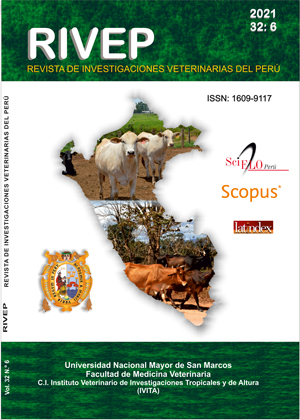Illegal trafficking conditions of wildlife animals in a rescue center in Guayaquil city
DOI:
https://doi.org/10.15381/rivep.v32i6.20377Keywords:
fauna, wild, conservation, biodiversityAbstract
The aim of the study was to identify the species affected by the illegal trafficking of wildlife received in a rescue center in the city of Guayaquil. For this, the records from 2018 to 2020 were collected, from which data were obtained on the origin of the rescue, the presence of injuries and their severity, and the percentage of mortality. Additionally, with the identification of the specimen, it was categorized according to the species, and its situation according to the red list of threatened species of the IUCN (International Union for the Conservation of Nature) and the red books of Ecuador. A total of 743 animals of different species were registered, the juvenile stage being the most frequent. These animals were received by confiscation and voluntary surrender. During this period there was a 10% mortality, with mammals showing the highest rate. According to the IUCN, most of the specimens are in the category of Least Concern, and according to the red books of Ecuador, birds and mammals were located in those of Least Concern and reptiles were registered Vulnerable in a higher proportion.
Downloads
Downloads
Published
Issue
Section
License
Copyright (c) 2021 Romina Richards, María Fernanda Emen, Octavio Rugel G.

This work is licensed under a Creative Commons Attribution 4.0 International License.
AUTHORS RETAIN THEIR RIGHTS:
a. Authors retain their trade mark rights and patent, and also on any process or procedure described in the article.
b. Authors retain their right to share, copy, distribute, perform and publicly communicate their article (eg, to place their article in an institutional repository or publish it in a book), with an acknowledgment of its initial publication in the Revista de Investigaciones Veterinarias del Perú (RIVEP).
c. Authors retain theirs right to make a subsequent publication of their work, to use the article or any part thereof (eg a compilation of his papers, lecture notes, thesis, or a book), always indicating the source of publication (the originator of the work, journal, volume, number and date).










